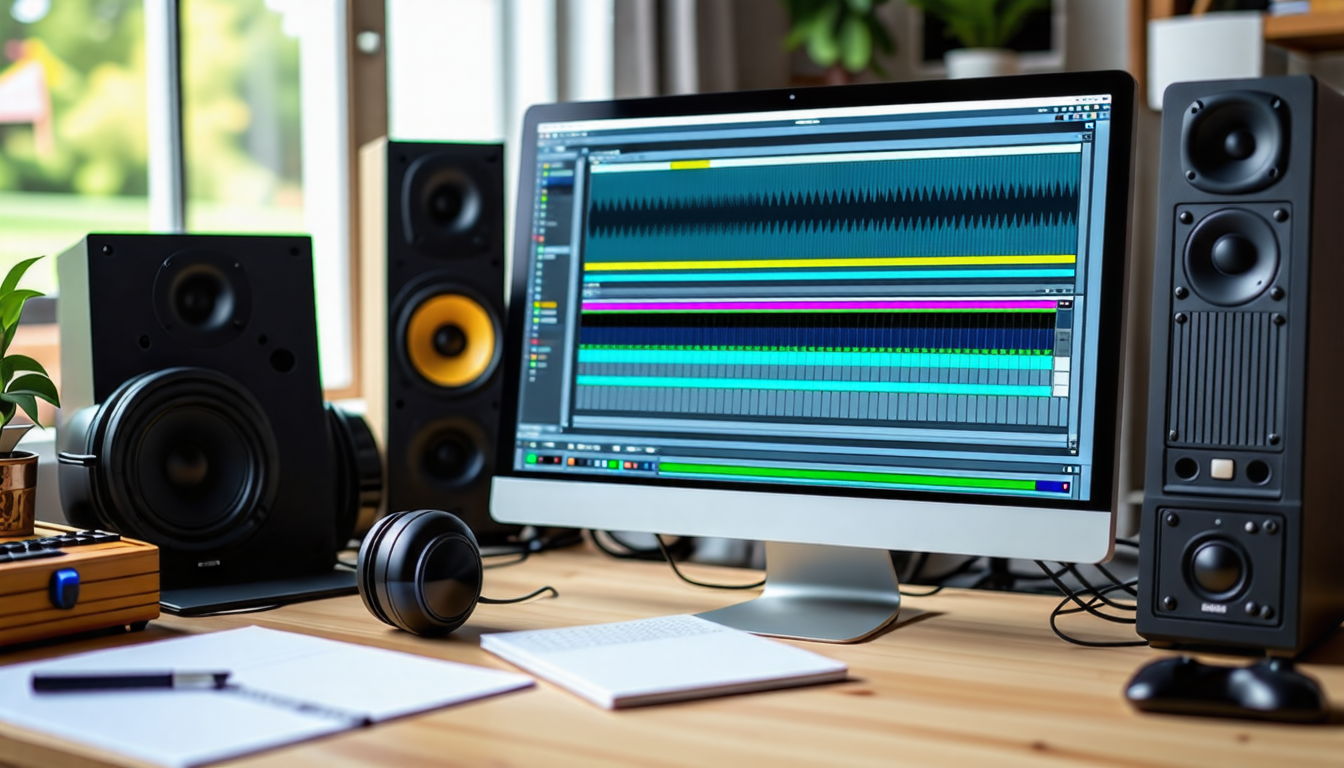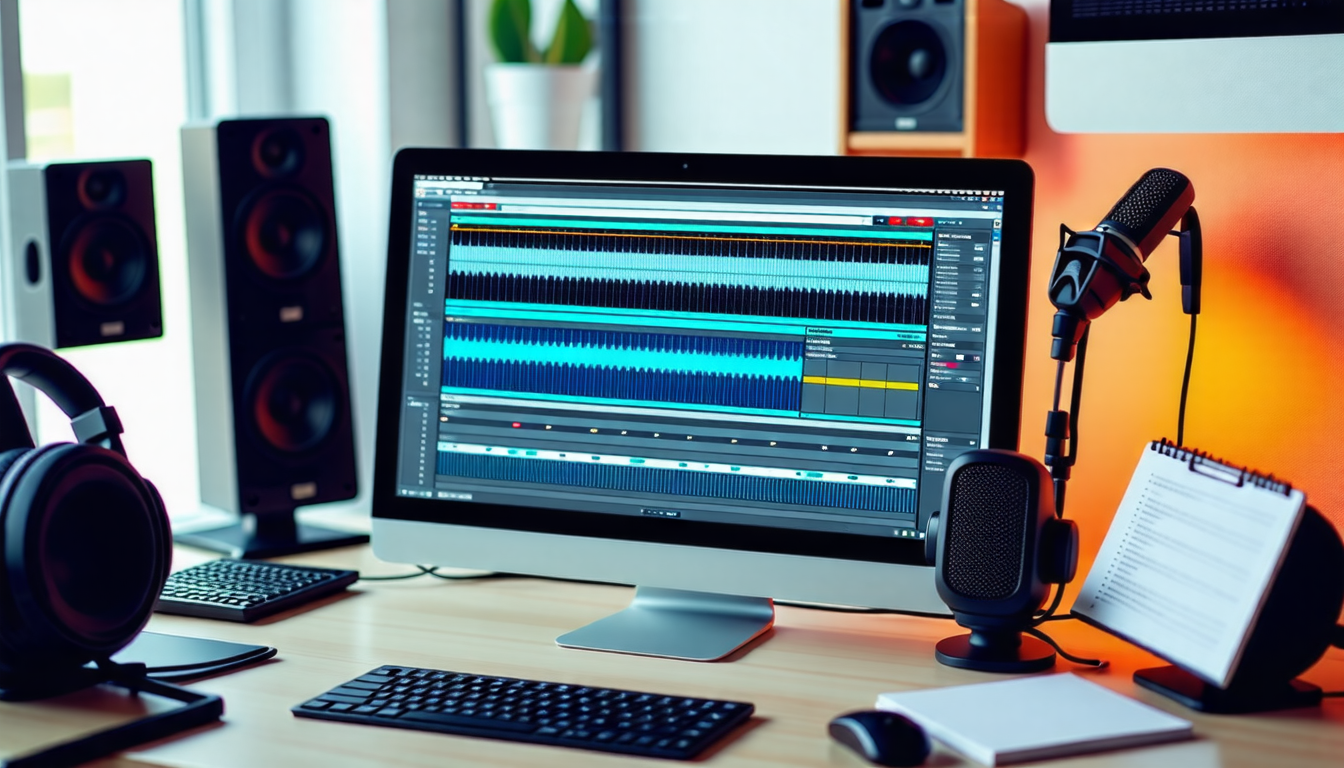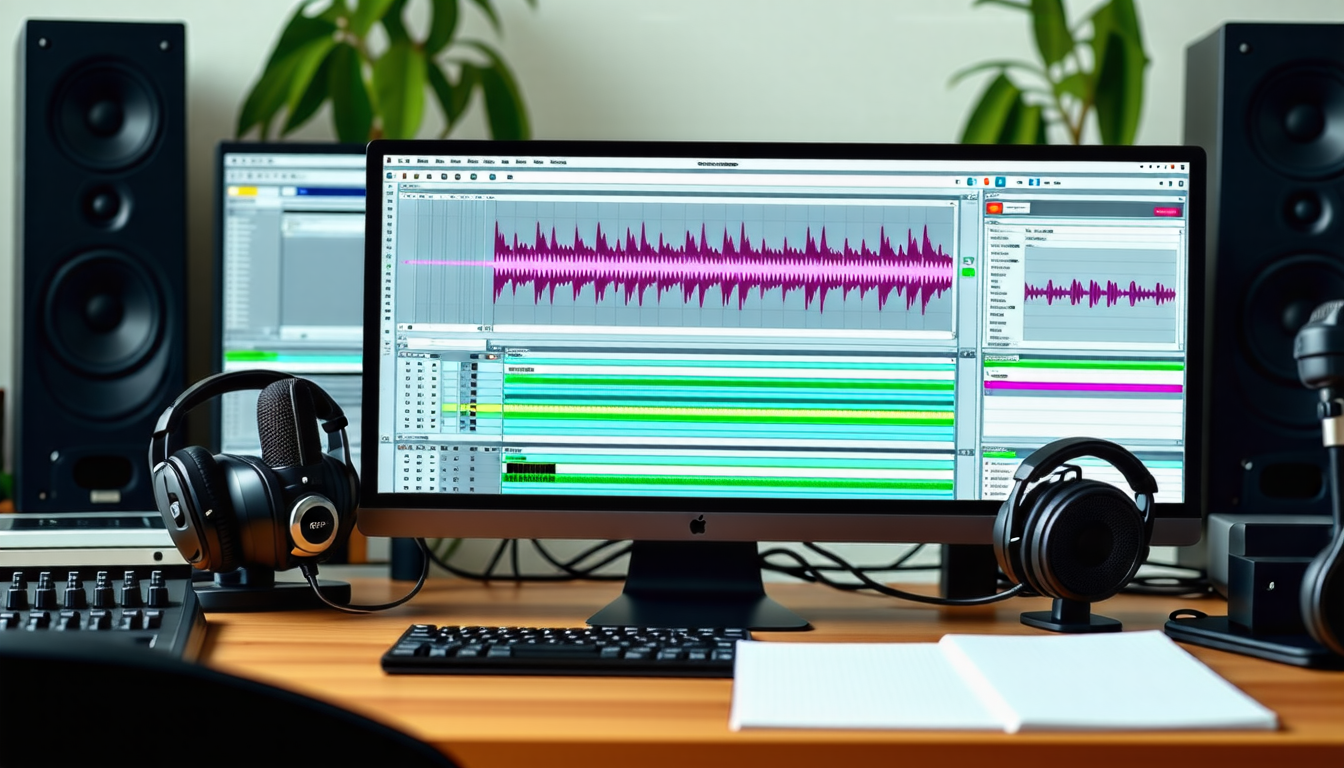|
IN BRIEF
|
When selecting audio editing software, various features must be meticulously evaluated to ensure optimal performance tailored to your project needs. The foundation often lies in multi-track recording, allowing simultaneous management of multiple audio sources. Integration capabilities with various plug-ins can significantly enhance the software’s versatility, enabling access to a wide range of audio effects to elevate your sound design. Essential tools such as equalization, compression, and noise filtration are crucial for achieving professional quality. Additionally, consider the software’s MIDI support and its ease of use, especially for beginners. Budget constraints are also pivotal—evaluate free trials to determine the best fit without overspending. Ultimately, a thoughtful assessment of these features will facilitate a well-informed decision for your audio projects.

When selecting the right audio editing software, it is essential to take into account various features that align with your specific needs and requirements. This decision can greatly impact the quality of your projects and the efficiency of your workflow. Below, we will explore the key features to consider when making this important choice.
Audio Recording Capabilities
One of the fundamental requirements of any audio editing software is its audio recording capabilities. Whether you’re capturing vocals, instruments, or sound effects, having a reliable and high-quality recording function is crucial. Look for software that supports multi-track recording, allowing you to layer different sound sources effectively. This capability enables you to combine multiple audio tracks, which is especially useful for producing complex music compositions or audio projects.
Plug-in Integration
Another vital feature is the ability to integrate plug-ins. These extensions enhance the functionality of your software by adding effects and instruments tailored to your needs. A diverse library of plug-ins, including virtual instruments and sound effects, will provide you with the flexibility to experiment with various sounds and techniques. Ensure that the software you choose is compatible with popular plug-in formats, such as VST, AU, and AAX, as this will broaden your options.
Audio Manipulation Tools
The software’s audio manipulation tools are essential for editing and refining your recordings. Look for features such as cutting, fading, and mixing, which allow you to shape the audio precisely as you envision it. Advanced manipulation options, such as pitch correction, time stretching, and noise reduction, can elevate the quality of your work significantly. A user-friendly interface for these tools will also make the editing process smoother and more efficient.
Multi-track Editing Support
Multi-track editing is a crucial element for various audio projects, especially in music production and post-production for film or video. Check if the software you are considering offers a robust multi-track editing environment. This feature allows you to work on several audio tracks simultaneously, providing greater control over mixing and mastering processes. Additionally, ensure that the software can handle a significant number of tracks to accommodate larger projects.
MIDI Support
For those working with digital instruments, MIDI support is a feature that should not be overlooked. MIDI integration enables you to record and edit musical performances generated by virtual instruments, giving you greater flexibility in your compositions. Ensure that the software allows for seamless MIDI recording, editing, and playback, enabling you to create intricate musical arrangements.
User Interface and Workflow Efficiency
The user interface of audio editing software plays a crucial role in your overall experience. A clean, intuitive design can enhance your workflow and boost productivity. When exploring different options, pay close attention to how easy it is to navigate the interface, access tools, and organize your projects. An efficient layout can significantly reduce editing time and make the entire process more enjoyable.
Audio Effects and Processing Features
A range of built-in audio effects is a valuable addition to any audio editing software. Look for features such as equalization (EQ), compression, reverb, and delay that can enhance your sound. Advanced software may also include features like saturation, side chaining, and dynamic processing to achieve professional-sounding results. Having a variety of effects readily available allows for more creative possibilities during the editing process.
Export Options and File Formats
The ability to export your finished work in various file formats is an essential feature to consider. Check if the software supports common formats like MP3, WAV, and AIFF, as well as any specific formats required for your projects. Moreover, ensure that it allows for exporting multi-track sessions, preserving the versatility needed for further editing or collaboration. A flexible export process streamlines the sharing of your audio with other platforms or collaborators.
Price and Budget Considerations
Your budget plays a significant role in the software you choose. There are various options on the market ranging from free to premium paid versions. It’s crucial to evaluate the features each package offers and how they align with your requirements. Additionally, consider whether the software has a free trial option. Testing the software before committing could prevent disappointment, ensuring it meets your needs.
System Requirements and Compatibility
Before settling on a specific audio editing software, check its system requirements to ensure compatibility with your computer. Some software demands more resources and may require a more powerful system to function optimally. Ensure that your device meets recommended specifications to avoid performance issues during audio editing. This attention to detail will help avoid frustration during critical editing sessions.
Community and Support
The presence of a strong user community and customer support can be invaluable when navigating new software. A vibrant community can provide resources such as tutorials, advice, and troubleshooting tips, while responsive customer support can aid in resolving issues quickly. When selecting your audio editing software, research if the company offers substantial support options, such as forums, help centers, or direct contact.
Regular Updates and Development
Another aspect to consider is the software’s commitment to regular updates. An active development team continually improves software performance and adds features based on user feedback. This dedication can ensure that your chosen software remains relevant and compatible with new technologies and trends in audio production. Assess the software’s history and frequency of updates to gauge its future viability.
Trial Versions and User Reviews
One effective way to determine whether audio editing software will meet your needs is to take advantage of trial versions. Testing the software before purchase allows you to experience its interface and features firsthand. Furthermore, researching user reviews can provide insights into the software’s performance and potential drawbacks. User feedback can help you make a more informed decision based on real-world experiences.
Essential Equipment for Audio Editing
While selecting software is crucial, it’s equally important to focus on essential equipment that complements your editing setup. Investing in quality microphones, audio interfaces, and monitors can significantly affect your overall production quality. Research what equipment is essential for your specific audio editing tasks, as it will contribute to creating professional-sounding recordings. For more in-depth information on essential equipment, visit this guide on essential equipment for sound editing.
Ultimately, the choice of audio editing software comes down to your unique workflow needs and the features that support your creative vision. Evaluating each option based on the outlined factors will help narrow your choices, leading you to a software solution that enhances your audio projects effectively. For those interested in software options, EnergyXT is a standout choice, offering a robust set of features that expands the possibilities for audio editing.

When selecting audio editing software, several key factors must be considered to ensure it meets your project’s requirements. First, assess your budget to narrow down options while still meeting essential capabilities. Essential features to look for include multi-track recording, which allows for more complex edits, and audio effects, including EQ, compression, and reverb. Furthermore, the ability to integrate plug-ins can enhance creative options. Also, consider the user interface and workflow efficiency, as this impacts productivity. Finally, exploring free trials can provide hands-on experience, allowing you to determine if the software aligns with your specific needs and preferences.
Frequently Asked Questions about Choosing Audio Editing Software
What are the key features to look for in audio editing software? Essential features include multi-track editing, audio effects, plug-in integration, and MIDI support.
Why is multi-track recording important? Multi-track recording allows you to manage and edit multiple audio sources simultaneously, enabling more complex production.
What types of audio effects should I prioritize? Focus on effects such as equalization, compression, reverb, delay, and advanced sound filters.
How does plug-in integration benefit audio editing? Plug-in integration enhances your software by allowing you to add third-party effects and instruments, expanding the creative possibilities.
What should be considered regarding budget when choosing software? It’s crucial to evaluate your budget in relation to your project needs and the features you require to ensure you make a wise investment.
Are there specific features for music tracks? Yes, essential features for music tracks include multi-track recording, audio effects, and MIDI support.
What are noise filters and why are they important? Noise filters help remove unwanted sounds from recordings, ensuring cleaner and more professional audio quality.
How can I determine which software suits my project best? Compare the features across different software solutions, and consider trying free trials to evaluate their functionality.

